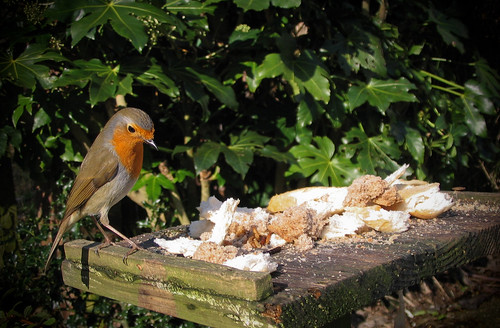This is the time of year I start to think about getting some bird food in. I know it’s late, however my garden has quite a few sources of wild food which have kept birds going up until now. The pyracantha berries are mostly eaten – which has provided a nice spectacle from my kitchen window as they sit on the hedge below it and stuff themselves. Quite a few hawthorn berries remain – I think because this autumn has been a fantastic one for fruit production. Rosehips are now gone from the dogrose, but the holly berries remain.

The ivy berries are yet to fully ripen; they will provide fruit for blackbirds and thrushes, at a time when the other berries have been exhausted. Opium poppies and knapweed are good sources of seed for bluetits and goldfinches. I’ve seen them jump onto the knapweed stems to bend them to the ground so they can more conveniently peck at the seedheads – and I’ve spent an awed ten minutes watching a bluetit clasp a poppy stem, while it poked a hole in the seedhead to get at the myriad tiny seeds inside.
The windfall apples are on the ground and will provide the ground feeders, including blackbirds, thrushes and fieldfares, with winter food. I keep some inside to throw out to them when the food outside is frozen or buried in snow.
So, now to order in some other sources of food. I use CJ WildBird Foods. They have a free handbook with helpful information about what food to feed which bird. I go for peanuts and mixed seeds: these foods attract the finches, tits, robins and sparrows, with the odd woodpecker to provide some drama. Providing nyjer seed will attract the colourful goldfinches, too. Fat balls will keep birds going in the depths of winter when they need more energy. See this article for how to make these (or you can buy them).
The only problem this year is that I have adopted a young cat who seems to be a very quick mover. I shall have to lock her in when I’ve filled the feeders: thanks to whoever invented the adjustable catflap!
